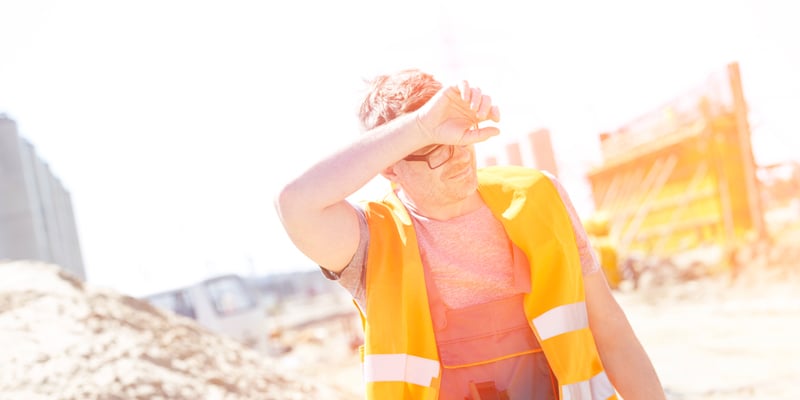
By
Rob Boyle
October 10, 2024
Updated
October 10, 2024

What is heat-related illness?
Heat-related illnesses are caused by extended periods of time under the sun, whether it be outdoors for leisure or on a work site. Heat illnesses have varying symptoms and degrees, all of which should be taken very seriously.
In summer seasons or hot temperatures, it is important to take care of your body and your skin to avoid any heat-related illnesses or worse, skin cancer.

What are the types of heat-related illness?
There are four types of heat-related illnesses:
- Heatstroke: The most serious and life-threatening form of heat-related illness, heatstroke happens when the body becomes unable to regulate its core temperature and may rise above 106°F (41°C) in minutes. Sweating stops and the body can no longer rid itself of excess heat.
Heat stroke is a medical emergency that may result in death. Call 911 immediately.
- Heat exhaustion: An illness that can precede a heatstroke, heat exhaustion is the body's response to loss of water and salt from heavy sweating.
- Heat cramps are muscle pains or spasms caused by the loss of body salts and fluids during sweating. Low salt levels in muscles cause painful cramps, and the tired muscles used for performing work are usually the ones most affected by cramps.
- Heat rash: Also known as prickly heat, heat rash is a skin irritation caused by excessive sweating that does not evaporate from the skin. Heat rash is the most common problem in hot work environments.
What are the symptoms of heat illnesses?
The Occupational Safety and Health Administration (OSHA) provides a chart to show symptoms and first aid measures to take if a worker has signs of a heat-related illness.
Heat Stroke
| Symptoms | First Aid |
|
|
Heat Exhaustion
| Symptoms | First Aid |
|
|
Heat Cramps
| Symptoms | First Aid |
|
|
Heat Rash
| Symptoms | First Aid |
|
|
Who is affected by heat stress?
Everyone is different when it comes to heat. We all vary from individual to individual when it comes to our tolerance of heat. The body normally cools itself by sweating, but during hot weather, especially with high humidity sweating isn't enough. Body temperatures can quickly rise to dangerous levels.
Anyone can be affected by heat stress and experience symptoms of heat illness, whether you are working in extreme temperatures or enjoying the summer season. The following are at high risk and should avoid extreme heat exposure:
- People who are overweight may be prone to heat sickness because of their tendency to retain more body heat
- People who overexert during work may become dehydrated and susceptible to heat sickness
- People who are physically ill, especially with heart problems or disease, high blood pressure, or who take certain medications
- People who are on a low-sodium diet
- People 65 years of age or older may not compensate for heat stress efficiently and are less likely to sense and respond to change in temperature
How can I prevent heat-related illness?
Following some basic steps can help you prepare, prevent and protect yourself from heat-related illnesses.
- Always apply sunscreen before any outdoor activity. Ultraviolet (UV) rays from the sun can cause both premature aging and skin cancer in the long-term, as well as painful burn the next day. Even those with darker skin should use a sunscreen with a minimum sun protection factor (SPF) of 15.
- Stay hydrated and take breaks. Before starting any activity, drink up to 16 ounces of water, and drink plenty of fluids throughout. Take breaks and spend time indoors or in the shade.
- Pay attention to symptoms. Learn to recognize the symptoms of heat stress and heat-related illnesses. If you suspect you or someone is suffering from symptoms, call for medical attention.
